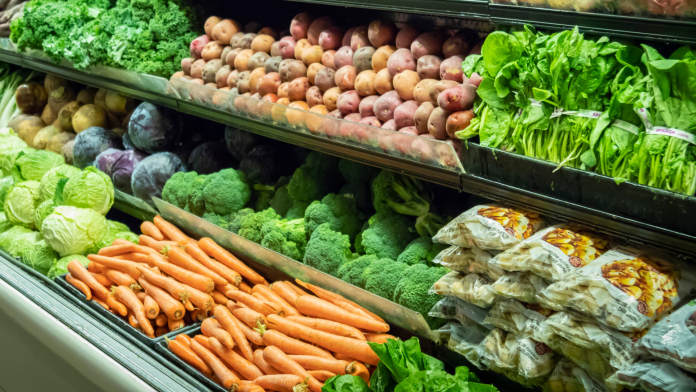One week prior to Durga Puja, the cost of vegetables is once again steadily rising, with items such as cauliflower, eggplant, long beans, capsicum, and chili all surpassing the hundred-rupee mark, while others are edging closer to it.
Furthermore, trade insiders assert that there is no immediate relief in prospect. They argue that while the demand-supply disparity contributes to the price surge, retailers engaging in unreasonable profiteering are also culpable.
The heavy rainfall during the final phase of the monsoon has resulted in extensive flooding across the southern regions of Bengal. This has disrupted the vegetable production cycle in areas including Howrah, Hooghly, North and South 24 Parganas, East Burdwan, and West Midnapore.
As a result, there is a heightened reliance on Jharkhand, Assam, and Odisha for sourcing supplies. Additionally, substantial quantities of cabbage, cauliflower, beans, capsicum, drumsticks, and eggplants are being imported from Bengaluru and Pune.
Over the last ten days, the prices of all vegetables have surged significantly, with some witnessing a 40% rise, others a 70% increase, and a few even exceeding the 100% mark.
“We are buying fewer veggies and more potatoes to strike a balance,” said Roshni Pal, a marketing executive with a private company.
Amalendu Sarkar, a government school teacher, says he is cutting corners to keep monthly expenses in check. “Prices of all commodities are going up. With income remaining near-constant, we have no option but to cut corners. When even this does not help, the kitchen budget eats into emergency savings,” he said and urged greater monitoring of the retail market by government agencies.
Over the last ten days, vegetable prices in Kolkata have surged dramatically, putting pressure on household budgets. Trade insiders attribute this price hike to two main factors: the demand-supply imbalance caused by heavy rainfall in the final stages of the monsoon, leading to extensive flooding in southern Bengal, and retailers’ profiteering practices.
On the other hand, retailers contend that they are purchasing vegetables at elevated prices from wholesale markets, which necessitates selling them at higher rates. They insist that the root of the issue is the substantial rainfall, submerging vegetable fields and causing a decrease in production and a decline in quality.
But a closer scrutiny of retail prices vis-a-vis wholesale prices reveal a wider-than-usual gap. “There will always be a gap between wholesale and retail prices. But it is a cause of concern when this gap exceeds 20% even after taking into account the cost of transportation and the loss of 5% due to damaged vegetables. It is unfair and bad economics if a retailer earns much more than a farmer who produces the vegetables,” said Kamal De, president, Bengal Vendors’ and Farmers’ Association.


